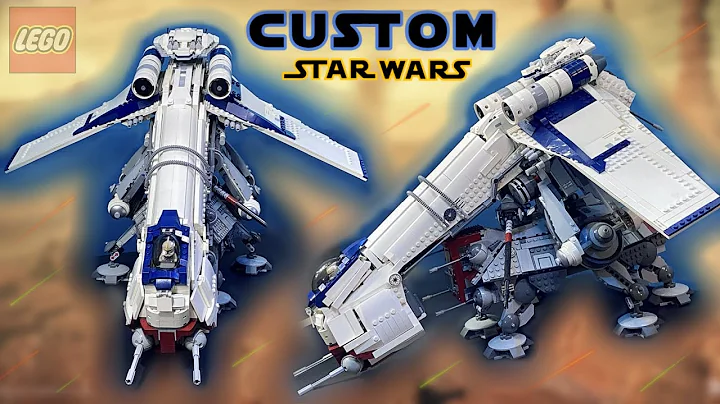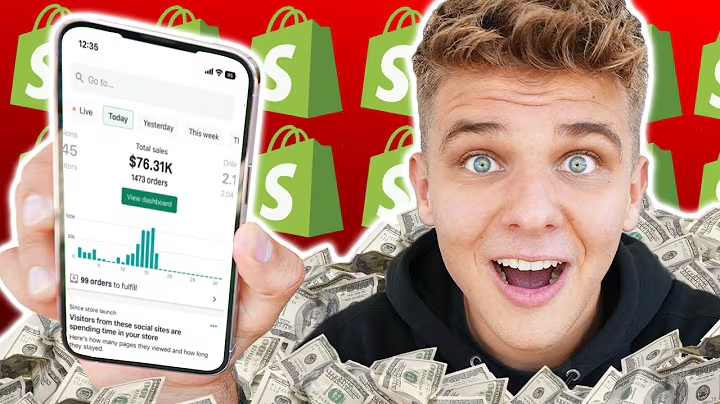From $0 to $1500 Profit in 1 Week: Shopify Dropshipping Challenge
Table of Contents
- Introduction
- Finding the Product
- Setting Up the Website
- Filming Ads
- Scaling the Product
- Day Zero: Product Research and Store Creation
- Day One: Ad Creation and Setup
- Day Two: Promising Results
- Day Three: Scaling the Campaign
- Day Four: Setback and Recovery
- Day Five: Testing Single Interest Ad Sets
- Day Six: Reaching $500 in Sales
- Day Seven: Tweaking Ads and Increasing Conversion Rate
- Day Eight: Continued Success
- Conclusion
Article
Day Zero: Product Research and Store Creation
In the world of dropshipping, finding the right product is crucial. It can make or break your success. For this challenge, I decided to sell clip-on glasses. I came across these glasses while scrolling through TikTok, and I knew they had the potential to be a hit.
However, finding the product was just the first step. I needed to set up a website to sell it. I opted for Shopify, which offers a user-friendly platform and a free trial. Within a few hours, my website was up and running, ready to showcase my clip-on glasses.
Day One: Ad Creation and Setup
With my website set up, it was time to create ads and start driving traffic. I filmed several videos inspired by the viral clip-on glasses video I had seen on TikTok. I wanted to recreate the same excitement and engagement that the original video had generated.
Using TikTok's ad manager, I set up my first campaign for website conversions. I optimized the campaign for a $50 daily budget and selected the United States as my target audience. I also chose specific times to run the ads, ensuring maximum visibility during peak hours.
To my surprise, I woke up the next morning to two sales and $70 in revenue. It was an encouraging start, and I knew that I had tapped into a winning product.
Day Two: Promising Results
Buoyed by the initial success, I decided to double my budget for the day and scale up my ad campaign. This decision paid off as I saw a significant increase in sales. I generated $304.91 in sales, with only $99.64 spent on ads.
However, the conversion rate was not as high as I had hoped. This prompted me to update my website, improve product images, and tweak the product description. I wanted to increase the conversion rate and optimize the user experience.
Day Three: Scaling the Campaign
On day three, I ramped up my advertising efforts even more. I doubled my daily budget and created additional single-interest ad sets to test different targeting strategies. This approach helped me expand my reach and generate more sales.
The total sales for the day reached $584.55, with a cost of goods amounting to $116. After deducting the ad spend, I ended the day with a profit of $139.96. The scaling was proving to be effective, and I was confident in the potential of my clip-on glasses.
Day Four: Setback and Recovery
Unfortunately, day four presented a setback. I made the mistake of not deactivating my PayPal checkout, which led to a temporary account suspension and $140 worth of refunds. This setback brought me back to break-even, but I immediately took action to rectify the situation.
I emailed the customers affected, explaining the issue and offering a discount code for them to repurchase. I wanted to regain some of the lost revenue and maintain good customer relations.
Despite the setback, I remained profitable. With $223 spent on ads and $584.55 in sales, I still managed to make a profit of $104.54. I learned the importance of being vigilant and ensuring all aspects of the business are properly managed.
Day Five: Testing Single Interest Ad Sets
To continue optimizing my ad strategy, I focused on testing single-interest ad sets. By targeting specific interests, I aimed to reach a more qualified audience and increase conversions.
The results for day five were promising, with $494 in sales and an ad spend of $313.31. The conversion rate improved, and I was on track to maintain a steady profit.
Day Six: Reaching $500 in Sales
Excitement grew as I reached a milestone of $500 in daily sales. Day six proved to be a substantial success, with a total profit of $518. I had surpassed my initial expectations and knew that I had found a winning product.
Day Seven: Tweaking Ads and Increasing Conversion Rate
As the challenge neared its end, I focused on fine-tuning my ad strategy and increasing the conversion rate further. By making small tweaks to the ads and website, I aimed to optimize the user experience and drive more sales.
On day seven, I spent $444.34 on ads and generated $863 in sales. The conversion rate continued to improve, and I felt confident in the sustainability of my business.
Day Eight: Continued Success
On the final day of the challenge, I maintained my success. With a total ad spend of $460, I reached over $1,000 in sales. The profit for the day stood at $370.27, bringing my total profit for the entire challenge to over $1,000.
The challenge had exceeded my expectations, proving that with the right product and effective advertising, dropshipping can be a profitable venture.
Conclusion
In just eight days, I had built a successful dropshipping business, generating significant profits. The key to my success lay in finding the right product, creating engaging ads, and optimizing the user experience.
While there were setbacks along the way, I adapted and learned from my mistakes. By constantly tweaking and improving, I was able to scale my business and achieve impressive results.
Dropshipping can be a lucrative business model if approached strategically. By following the steps outlined in this challenge, you too can find success in the world of online entrepreneurship.
Highlights
- Dropshipping is making a comeback, and TikTok has made it easier than ever to start a profitable store.
- Finding the right product is crucial for success in dropshipping.
- Setting up a website on platforms like Shopify is simple and affordable.
- Creating engaging ads and filming compelling videos can drive sales.
- Scaling your ad campaigns based on promising results can lead to significant profits.
- Setbacks and challenges are inevitable but can be overcome with quick action and adaptability.
- Testing different ad strategies, such as single-interest ad sets, can optimize targeting and increase conversions.
- Tweaking ads and optimizing the user experience can boost conversion rates and drive more sales.
- Maintaining profitability and steady growth is possible by continuously monitoring and improving your dropshipping business.
- Dropshipping offers great potential for entrepreneurs to build successful online businesses and generate significant profits.
FAQ
Q: What is dropshipping?
A: Dropshipping is a business model where the seller doesn't keep products in stock. Instead, when a customer places an order, the seller purchases the item from a third-party supplier who then directly ships it to the customer.
Q: How do I find the right product to sell in dropshipping?
A: Product research is essential in dropshipping. Look for products that are in demand, have good profit margins, and can be sourced reliably. Platforms like TikTok and AliExpress can be great sources of product inspiration.
Q: How much does it cost to start a dropshipping business?
A: The costs of starting a dropshipping business can vary. You'll need to consider expenses such as domain registration, website hosting, advertising, and product sourcing. Platforms like Shopify offer affordable plans to get started.
Q: How can I drive traffic to my dropshipping store?
A: Effective advertising is crucial for driving traffic to your dropshipping store. Platforms like TikTok, Facebook, and Instagram can be used to reach your target audience. Creating engaging ads and optimizing your targeting strategies can boost visibility and increase conversions.
Q: What should I do if I face setbacks or challenges in my dropshipping business?
A: Setbacks and challenges are common in any business. The key is to remain adaptable and take quick action to address the issues. Communication with customers and finding solutions that maintain good customer relations is crucial. Learn from your mistakes and continuously improve your business strategies.
Q: Can dropshipping be a profitable business model?
A: Dropshipping can be a profitable business model if approached strategically. Finding the right product, creating compelling ads, and optimizing the user experience are key factors in achieving success. Continuous testing, tweaking, and scaling can lead to significant profits in the long run.















